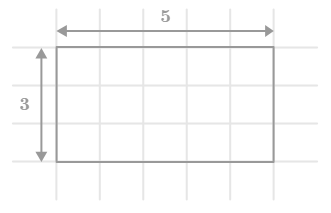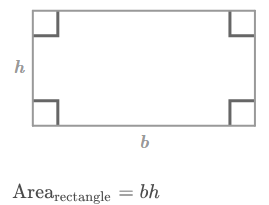Class 6: Mathematics
-
Chapter 1: Knowing Our Numbers5 Topics|2 Quizzes
-
Session 1: International Number System and Indian Number System - Definition, Chart, Interactives and Examples
-
Session 2: Comparing and Ordering Numbers - Steps and Examples
-
Session 3: Estimation of Numbers (Rounding Off Method) - Rules, Steps and Examples
-
Session 4: Roman Numerals - Definition, Rules, Chart, Conversion and Examples
-
NCERT Flip Book (Chapter 1: Knowing Our Numbers)
-
Session 1: International Number System and Indian Number System - Definition, Chart, Interactives and Examples
-
Chapter 2: Whole Numbers5 Topics
-
Session 1: What are Whole Numbers? - Definition, Symbol, Comparison and Examples
-
Session 2: Addition and Subtraction of Whole Numbers - Properties and Examples
-
Session 3: Multiplication and Division of Whole Numbers - Division Algorithm, Properties and Examples
-
Session 4: Patterns in Whole Numbers - Definition, Types and Examples
-
NCERT Flip Book (Chapter 2: Whole Numbers)
-
Session 1: What are Whole Numbers? - Definition, Symbol, Comparison and Examples
-
Chapter 3: Playing With Numbers8 Topics
-
Session 1: What is a Factor? - Properties, Methods, Interactives and Examples
-
Session 2: What is a Multiple? - Definition, Properties, Interactives and Examples
-
Session 3: Prime Numbers and Composite Numbers - Sieve of Eratosthenes, Definition, List, Facts and Examples
-
Session 4: Prime Factorisation - Definition, Methods, Steps and Examples
-
Session 5: Divisibility Rules for 2, 3, 4, 5, 6, 8, 9, 10 and 11 - Properties, Chart and Examples
-
Session 6: Highest Common Factor (H.C.F.) - Definition, Methods, Steps, Interactives and Examples
-
Session 7: Lowest Common Multiple (L.C.M.) - Definition, Methods, Steps, Interactives and Examples
-
NCERT Flip Book (Chapter 3: Playing With Numbers)
-
Session 1: What is a Factor? - Properties, Methods, Interactives and Examples
-
Chapter 4: Integers5 Topics
-
Session 1: What are Integers? - Definition, Symbol, Number line, Absolute Value and Examples
-
Session 2: Comparing and Ordering Integers - Rules and Examples
-
Session 3: Addition of Integers - Steps, Rules, Number Line, Interactives and Examples
-
Session 4: Subtraction of Integers - Steps, Rules, Properties, Number Line, Interactives and Examples
-
NCERT Flip Book (Chapter 4: Integers)
-
Session 1: What are Integers? - Definition, Symbol, Number line, Absolute Value and Examples
-
Chapter 5: Fractions6 Topics
-
Session 1: What are Fractions? - Definition, Representation, Number line, Interactives and Examples
-
Session 2: Types of Fractions - Definition, Interactives and Examples
-
Session 3: Comparing and Ordering Fractions - Methods, Interactives and Examples
-
Session 4: Adding Fractions (Like and Unlike Denominators) - Steps, Interactives and Examples
-
Session 5: Subtracting Fractions - (Like and Unlike Denominators) - Steps, Interactives and Examples
-
NCERT Flip Book (Chapter 5: Fractions)
-
Session 1: What are Fractions? - Definition, Representation, Number line, Interactives and Examples
-
Chapter 6: Decimals11 Topics
-
Session 1: What are Decimals? - Definition, Place Value Chart, Expansion, Types, Conversion and Interactives
-
Session 2: Decimal Fraction - Definition, Types, Conversion, Steps, Interactive and Examples
-
Session 3: Comparing Decimals - Steps, Interactive and Examples
-
Session 4: Uses of Decimal Notation - Conversion Chart and Examples
-
Session 5: Adding Decimals - Steps, Interactive and Examples
-
Session 6: Subtracting Decimals - Steps, Interactive and Examples
-
Session 7: Length Conversion - Metric Units and Customary Units
-
Session 8: Mass (Weight) Conversion - Metric Units and Customary Units
-
Session 9: Capacity Conversion - Metric Units and Customary Units
-
Session 10: Temperature Conversion - Metric Units and Customary Units
-
NCERT Flip Book (Chapter 6: Decimals)
-
Session 1: What are Decimals? - Definition, Place Value Chart, Expansion, Types, Conversion and Interactives
-
Chapter 7: Algebra3 Topics
-
Chapter 8: Ratio, Proportion and Unitary Method3 Topics
-
Chapter 9: Understanding Elementary Shapes2 Topics
-
Chapter 10: Basic Geometrical Ideas7 Topics
-
Session 1: What is Geometry? - Points, Lines, Planes and Solids
-
Session 2: Angles - Definition, Types, Interactives and Examples
-
Session 3: Polygons and Curves - Definition, Types, Interactives and Examples
-
Session 4: Triangles - Definition, Types, Interactives and Examples
-
Session 5: Quadrilaterals - Definition, Types, Properties, Interactives and Examples
-
Session 6: Circles - Definition, Formulae, Interactives and Examples
-
Session 7: What are Parallel Lines? - Transversal, Properties, Angles, Interactives and Examples
-
Session 1: What is Geometry? - Points, Lines, Planes and Solids
-
Chapter 11: Mensuration8 Topics
-
Session 1: Perimeter of Rectangle - Formula, Definition, Interactive and Examples
-
Session 2: Perimeter of Square - Formula, Definition, Interactive and Examples
-
Session 3: Perimeter of Triangle - Formula, Definition, Interactives and Examples
-
Session 4: Area of Rectangle - Formula, Definition, Interactive and Examples
-
Session 5: Area of Square - Formula, Definition, Interactives and Examples
-
Session 6: Area of Triangle - Formula, Definition, Interactives and Examples
-
Session 7: Area of Composite Shapes - Definition, Formula, Interactives and Examples
-
Session 8: Area of Irregular Shapes Using Squared Paper - Definition, Interactives and Examples
-
Session 1: Perimeter of Rectangle - Formula, Definition, Interactive and Examples
-
Chapter 12: Symmetry2 Topics
-
Chapter 13: Data Handling3 Topics
-
Chapter 14: Practical Geometry5 Topics
-
Session 1: Construction of Line Segments - Methods, Steps and Interactives
-
Session 2: Construction of Perpendicular Lines (Perpendicular Bisector) - Steps and Interactives
-
Session 3: Construction of Circles - Steps, Interactives and Examples
-
Session 4: Construction of Angles - Steps and Interactives
-
Session 5: Construction of Some Standard Angles (30°, 45°, 60°, 90°, 120° and 135°) - Steps and Examples
-
Session 1: Construction of Line Segments - Methods, Steps and Interactives
-
NCERT AND EXEMPLAR
Number System1 Topic -
Geometry1 Topic
-
Integers1 Topic
-
Fractions & Decimals1 Topic
-
Data Handling1 Topic
-
Mensuration1 Topic
-
Algebra1 Topic
-
Ratio & Proportion1 Topic
-
Symmetry & Practical Geometry1 Topic
Revolutionary SSC Bot: Unleashing Unmatched Efficiency and Precision
The SSC Bot is an advanced artificial intelligence-powered assistant designed to serve as a comprehensive guide for customers. It utilizes cutting-edge AI technology and natural language processing capabilities to understand and respond to customer queries effectively. With personalized assistance, 24/7 availability, and multilingual support, the SSC Bot ensures a seamless and efficient interaction for customers. It also possesses an extensive knowledge base, assists in troubleshooting and issue resolution, and seamlessly integrates with various platforms.
₹100.00Original price was: ₹100.00.₹49.00Current price is: ₹49.00.
Session 4: Area of Rectangle – Formula, Definition, Interactive and Examples
Admin 17/11/2024
Early human beings built their huts and erected tents with an intuitive notion of geometry. It is often claimed that geometry was the gift of the Nile. Early civilisations had a practical approach to geometry. They knew how to calculate the area of a triangle or a rectangle and had knowledge of the basic units of measurement. In these civilisations, two-dimensional geometrical forms like triangles, squares, circles, hexagons and octagons have been explored in architecture. Whether it’s the Great Bath of Mohenjodaro or the Great Wall of China of the Chinese civilisation, looking at the perimeter and area can help us understand the vastness of the project and help us analyse and give insight into the civilisation that created it.
What is Area?
The area is the amount of surface enclosed by a closed two-dimensional figure. It is measured by the number of unit squares it takes to cover a two-dimensional shape. For example, if you count the small squares, you will find there are 15 of them. Therefore, the area is 3⋅5 or 15 unit2.

Area of Rectangle
A rectangle is a plane figure whose opposite sides (facing each other) are of equal lengths. So, we have two equal lengths (bases) and two equal heights (breadths). The area of a rectangle is the number of unit squares it takes to cover a rectangle.
Formula for Area of Rectangle
Consider a rectangle shown below. Let b and ℎ denote its base and height respectively. The area of a rectangle is base b times height ℎ.

It follows from this formula that
base= \(\frac{Are{{a}_{rectangle}}}{height}\)
height= \(\frac{Are{{a}_{rectangle}}}{base}\)
Area of Rectangle – Examples
Example 1
Find the area of a rectangle whose length is 16 units and breadth is 7 units.
We know, area of a rectangle = length ×breadth
=16×7
=112 units2
Example 2
Find the length of the rectangle whose breadth is 25 mm and area is 900 mm2.
We know,
Area of a rectangle = length × breadth
∴ Length of the rectangle= \(\frac{Are{{a}_{rectangle}}}{breadth}\)
=\(\frac{900}{25}\)
=36 mm
Example 3
The length of a rectangular park is twice its breadth. If the perimeter of the park is 72 m, find its area.
Let the breadth of the park be x meters. Then, its length =2x meters.
Then, its length =2x meters.
∴ Perimeter of the rectangular park =2 (length + breadth)

Given, perimeter of the park = 72 m.

∴ breadth of the park = 12 m.
Hence, length of the park =2x=2×12=24 m.
∴ Area of the rectangular park = length × breadth

Example 4
How many envelopes can be made out of a sheet of paper 2 m by 1 m supposing each envelope requires a piece of paper of size 40 cm by 25 cm?
We know,
Area of the sheet =2 m×1 m

Area of paper required for one envelope=40 cm×25 cm
=(40×25) cm2
Number of envelopes =\(\frac{Area of the sheet}{Area of paper required for one envelope}\)

Example 5
If the area of a rectangle is 48 cm2 and the length and width are whole numbers, find the maximum possible perimeter of the rectangle.
Let the length and width of the rectangle be l and w, respectively.
Area of rectangle =l×w.
∴l×w=48 cm2.
The possible pairs are (48,1),(24,2),(16,3),(12,4) and (8,6).
∴ The maximum possible perimeter of the rectangle, P=2(l+w)=2(48+1)=98 cm
Remember this!
- The area is the amount of surface enclosed by a closed two-dimensional figure.
- The formula for the area of a rectangle is:
Arearectangle=base×height - Using the formula for the area of a rectangle, we can find the base and height of the rectangle:
base= \(\frac{Are{{a}_{rectangle}}}{height}\)
height=\(\frac{Are{{a}_{rectangle}}}{base}\)




